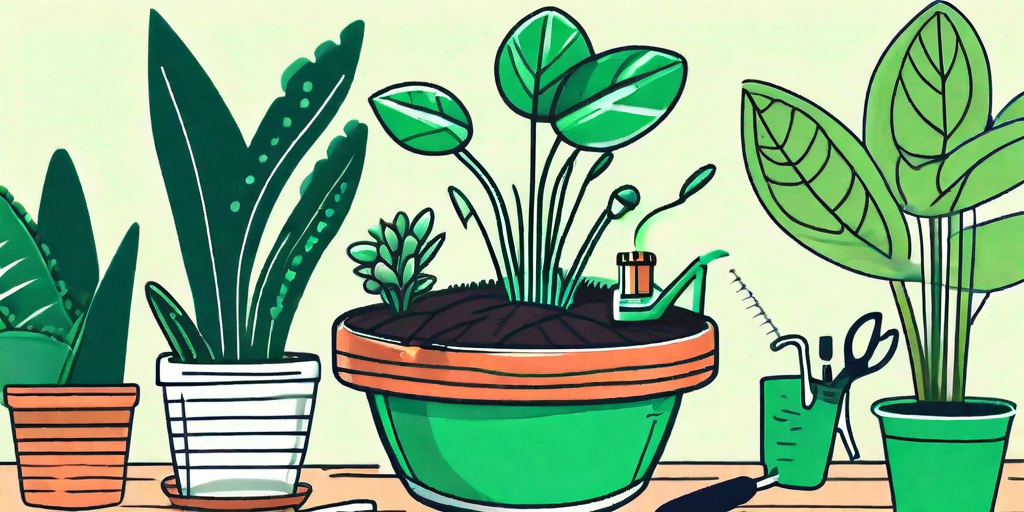
Welcome to the world of carnivorous plants, where the tables are turned and plants are the predators. If you're here, you're likely interested in the Venus Fly Trap, the most iconic of all carnivorous plants. Don't worry, they don't bite...much. Let's dive into the fascinating world of Venus Fly Trap care.
Understanding Your Venus Fly Trap
The Basics
First things first, let's get to know your Venus Fly Trap. Native to the subtropical wetlands of the East Coast of the United States, these plants have evolved to thrive in poor soil conditions by supplementing their diet with insects. Yes, you heard it right. They eat bugs. And they're not picky eaters either. Flies, spiders, beetles, even slugs are all fair game.
But don't worry, your fingers are safe. Venus Fly Traps don't have teeth, they have trigger hairs. When an unsuspecting insect lands on the plant's open 'mouth', it brushes against these hairs. If the insect touches two hairs within 20 seconds, the trap snaps shut, and dinner is served.
Life Cycle
Like any other plant, Venus Fly Traps have a life cycle. They sprout from seeds, grow into mature plants, flower, produce seeds, and eventually die. This cycle takes about 3-5 years. But don't fret, with proper care, your Venus Fly Trap can live up to 20 years!
During winter, Venus Fly Traps enter a dormant period. They stop growing and their traps may even turn black. But don't panic, they're not dead, just sleeping. When spring arrives, they'll wake up and start growing again.
Caring for Your Venus Fly Trap
Light and Temperature
Venus Fly Traps love the sun. They need at least 4 hours of direct sunlight each day. But be careful, too much heat can cook your plant. Aim for temperatures between 70-95°F (20-35°C) during the day and 55-75°F (13-24°C) at night.
During winter, Venus Fly Traps can handle cooler temperatures, but they should never be exposed to frost. If you live in a cold climate, consider moving your plant indoors during winter.
Water and Soil
When it comes to water, Venus Fly Traps are a bit picky. They prefer rainwater or distilled water. Tap water often contains minerals that can harm your plant. As for soil, they like a mix of peat moss and perlite. Remember, these plants are used to poor soil, so don't add any fertilizer.
Keep the soil moist but not waterlogged. A good rule of thumb is to water your plant when the top inch of soil feels dry. Overwatering can lead to root rot, which is as nasty as it sounds.
Feeding Your Venus Fly Trap
Yes, you can feed your Venus Fly Trap. But remember, they're not pets. They don't need to be fed every day. In fact, they can survive without eating any insects at all. But where's the fun in that?
If you decide to feed your plant, stick to small insects. Large bugs can cause the trap to rot. And never feed your plant meat or other human food. They're not equipped to digest it.
Frequently Asked Questions
- Can I touch my Venus Fly Trap?
While it might be tempting to trigger the traps just for fun, it's best to leave them alone. Each trap can only close a few times before it dies. So save those closures for catching dinner.
- Why is my Venus Fly Trap turning black?
Black traps can be a sign of several things. It could be that the trap has caught a bug and is digesting it. Or it could be that the trap is old and dying. If the whole plant is turning black, it could be a sign of overwatering or a fungal infection.
- Can I grow a Venus Fly Trap from a leaf cutting?
Yes, you can propagate Venus Fly Traps from leaf cuttings. Just make sure to keep the cutting in a humid environment until it develops roots.
Conclusion
So there you have it, the ins and outs of Venus Fly Trap care. With a bit of patience and a lot of love, you can have a thriving carnivorous plant that's sure to be the talk of the town. Just remember, don't stick your fingers in its mouth!
Happy growing!















